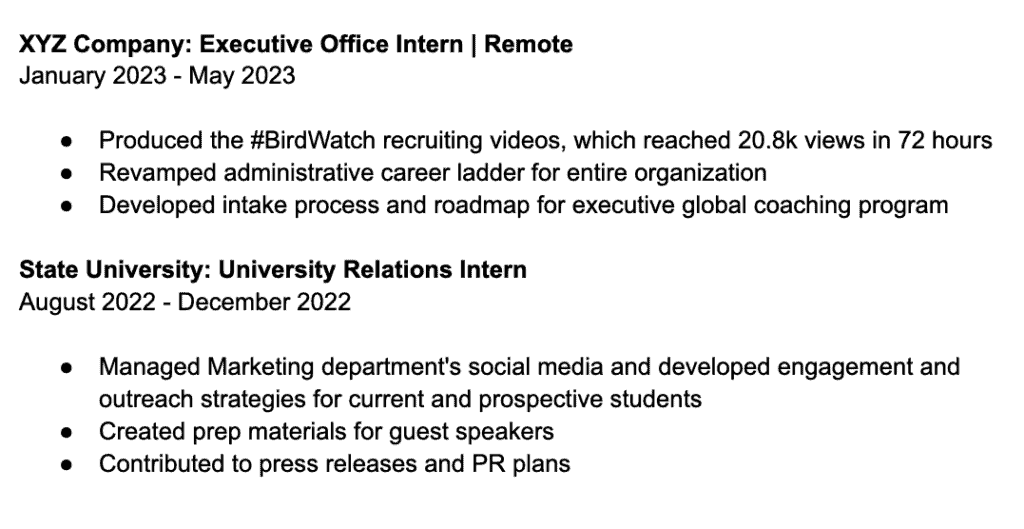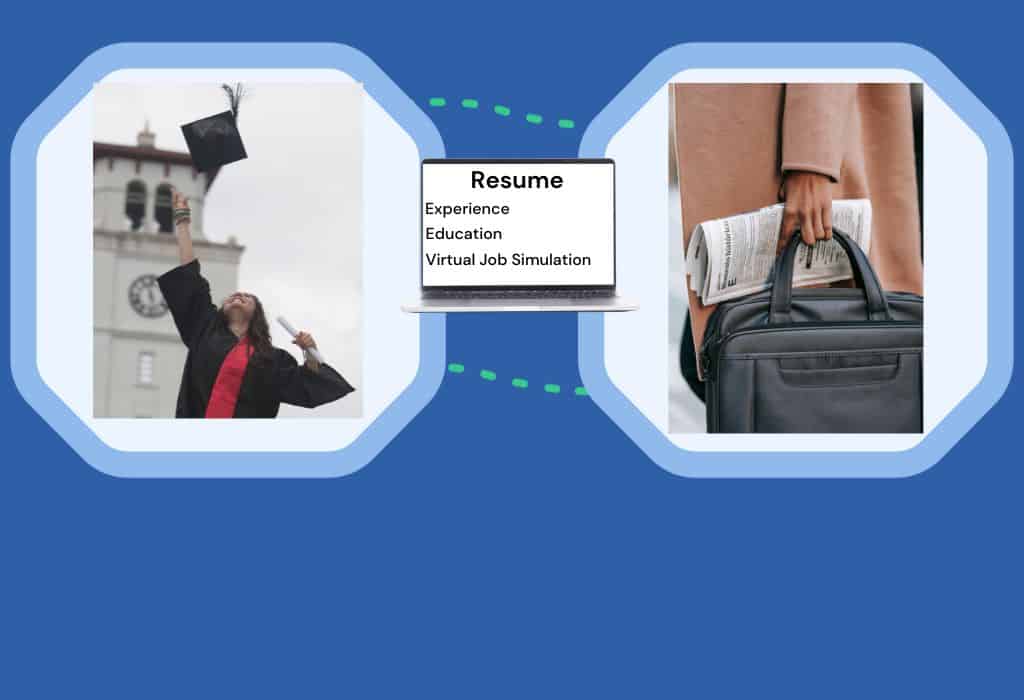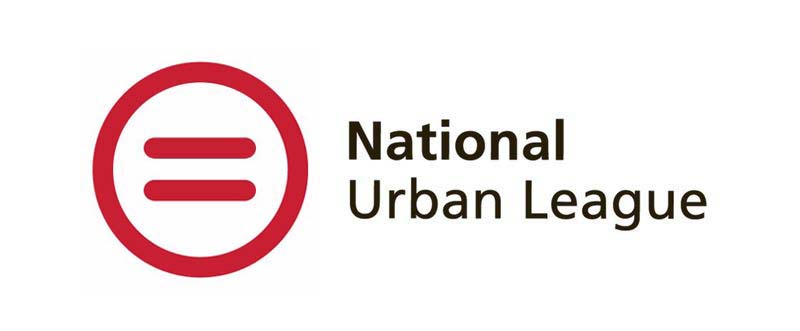Whether you’re looking for an internship, your first post-college job, or even a part-time summer position, you need a resume. This indispensable document isn’t just an accounting of your skills and abilities. It also helps a recruiter or hiring manager understand why they should hire you.
If this is your first attempt to create a resume or your current resume isn’t getting the results you want, then this is the guide for you. We’re covering anything and everything you need to know about how to create a resume that gets results.

First Off, What Is a Resume Anyway?
A resume is your professional autobiography. It’s a summary of your skills, abilities, and achievements and should help a hiring manager or recruiter understand why you’re the best person for the role.
The important word here is “summary.” While your resume doesn’t have to be a single page, it also doesn’t need to include every job, volunteer position, and award you’ve ever won. An extended version of your resume can go on your LinkedIn profile or online portfolio.

What Is a CV vs. a Resume?
A CV is a curriculum vitae, which, ironically, means “a summary of someone’s skills, education, and experience.” However, “CV” means different things depending on where you’re job hunting.
In the U.S., a CV is used primarily in academics. It’s an accounting of your experience, education, research projects, grants you’ve won, classes you’ve taught … you get the idea. It’s still a summary but includes a lot more than a resume.
However, outside the U.S., CV generally means “your resume.” So, if you’re applying for a job with a company that doesn’t have a U.S. presence, don’t be surprised if the job posting asks for your CV.

Do You Need a Resume?
Yes! Even if your work history consists of babysitting or part-time summer jobs, you need a resume. Why?
First, your resume is a living record that tracks where you’ve worked, the skills you’ve developed, and your professional accomplishments. It can help you identify everything you’re capable of and how far you’ve come professionally. And it’s a great tool to help you set your career goals and define a career plan.
Second, your resume is an excellent interview prep sheet. You know you’ll probably encounter common interview questions like, “Tell me about yourself” or “What is your greatest strength?” when you’re in an interview. Reviewing your resume before the interview can help you prepare answers with clear and specific examples that answer these questions and demonstrate why you’re perfect for the job.
>>MORE: Discover the tips and tricks for interview success in BCLP’s free Interview Success virtual job simulation.
Finally, luck, as they say, favors the prepared. You never know when the professional opportunity of a lifetime will come your way. As you’ll see, creating a resume takes time, and you don’t want to rush it. Having a resume on stand-by means you can apply for a job pretty much whenever you want.

How to Create a Resume
Now that you know what a resume is and why you need one, how do you create a resume, especially if you’re starting from scratch?
Before we explain how to create your resume, understand this is not a one-and-done deal. We’ll get into it further, but what you’re really doing is creating a resume template.
You’ll use this resume as a starting point when you apply for jobs. Every time you apply, you want to target your resume (and cover letter if you’re including one) to the specifics of the job description.
>>MORE: Read our detailed guide on how to write a resume. Want to go even deeper? Enroll in the free Forage Resume Writing Masterclass today.

Step 1. Gather Your Information
Start with a brain dump. In a blank document, list every job you’ve ever had, every club or activity you’re involved in, any volunteer work you’ve done, all the internships you’ve completed, and anything else you think might be relevant. If you want to include some of your job duties or what you did in a position you held in a club, go for it!

Step 2. Refine Your Information
After the initial brainstorming, you’ll spend some time refining the information.
For example, look at the jobs you’ve held and think of three to five things you were responsible for. Ideally, you’ll talk about what you accomplished and achieved, but if all you can come up with are duties, that’s totally fine for now!
>>MORE: Learn how to build and maintain your professional brand in Ashurst’s free virtual job simulation.
Do the same things for activities, clubs, internships, volunteering, and so on. Try to identify three to five things you did for each of them. If you can only come up with one or two — or even zero — that’s OK. You’ll have time to come up with a few duties, responsibilities, or accomplishments when you edit this draft.
Now, you’ve got a rough idea of your professional history, and you’ll use it to paint a picture of who you can be as an employee. This will help the hiring manager or recruiter understand what you’ll bring to the role and why they should hire you.
Don’t stress about making this version perfect, though. It’s still a rough draft, so be as messy as you want!

Step 3: Choose a Resume Type
Believe it or not, there are seven kinds of resumes! However, when it comes to applying for a job, you’ll use one of these three main formats:
- Chronological
- Functional
- Hybrid
Each of these resumes has pros and cons, and depending on your circumstances, you may favor one over the other. However, the chronological resume is the most widely used template.
Other less commonly used resume types are:
- Targeted
- Profile
- Infographic
- Mini

Step 4. Work From the Top Down
After selecting a template, you’ll create the first draft of your resume. On your first pass, you want to start at the top of the resume and work your way down, filling in the information as you go.
In the below example, we’re using a hybrid or chronological resume.

Contact Information
The very top of your resume is your contact information. This should include:
- Your full name and preferred name if you want
- Your email address
- Your cell phone number
- Your location (city and state is fine)
- A link to your LinkedIn profile
- A link to your digital portfolio (if you have one)

Forage Find
Make sure your voicemail is set up on your cell phone. While most recruiters will email or text you, some still prefer to call, and you don’t want to miss a message!

Summary of Qualifications
Just below your contact information is a summary of qualifications. This is a brief summary (no more than five sentences) of your skills, abilities, and accomplishments. Because this is “above the fold,” meaning it’s something someone reading your resume will likely notice first, it’s a great place for anything you want to call attention to.
This section is completely optional. Not everyone feels they have enough information for a solid qualifications summary, and some hiring managers and recruiters look at them after reviewing the rest of your resume.

Skills
The next section is skills, and, as the name implies, it’s a list of your professional skills.
When we say “list,” we don’t mean a laundry list of everything you can do. The skills section should only include skills that are relevant to the role. In most cases, that’s hard skills, but you can also include soft skills. And if you’re worried you don’t have any relevant skills, look to your transferable skills (the skills you master at one job that you can use in any job).
Because this is a list, you don’t necessarily need to explain how you use those skills on the job. You’ll do that in the work experience section. But this is a great place to include relevant skills that don’t fit anywhere else on your resume.
It’s also an optional section. If you don’t have enough room on your resume for everything else you have to include, you can delete this section. However, include some of these skills in the experience section.
>>MORE: Do you know the essential skills for a resume? Take our quiz and find out!

Work Experience
Many hiring managers and recruiters say the first thing they look at on any resume is the experience or job history section. Why? Not only are they interested in what you can do, they’re also interested in where you mastered those skills. This helps give your experience context and meaning.
For example, if you include your conflict-resolution skills, where did you develop them? Conflict resolution in a retail setting is very different from flexing those abilities as an account manager for a global account. The where is just as important as the what.
>>MORE: Identify and explore your professional must-haves in Discover Financial Services free Professional Skills virtual job simulation.
Include the name of the company you worked for, your job title, and the dates you worked there. You can also include that the job was remote. Under that information, include three to five accomplishments or job duties and responsibilities. Here’s an example:


Education
Next up is the education section. If you’ve already graduated, list the name of your school, when you graduated, and what your degree is in. If you’re still in school, list the name of your school, what you’re studying, your expected degree, and when you anticipate graduating.
And if you had to leave school, that’s OK. You can and should still include that information. List where you went to school, the dates you were there, and what you studied:


Forage Find
Should you put education ahead of experience when creating your resume? There’s nothing that says the experience section has to come before education. For example, if you’re applying for an internship that requires a specific major or GPA, putting the education section above the experience section may be the best move.

Internships
The next section is internships, which is formatted the same way as your work history section. It’s crucial that your internship information is a separate section from your work experience section. Even if your internship is paid, employers don’t view them the same way.
And if you haven’t completed an internship, no worries! You can skip this section.

Everything Else
Next, you’ll include everything else you want to use to create your resume.
These additional sections can include volunteering, clubs you were involved in, research you conducted, awards and accolades you’ve received, and so on. You’ll also want to list the Forage virtual job simulations you’ve completed. You can put them under a “project,” “certification,” or “virtual job simulation” section. See our referencing policy for more details.

Forage Find
When you complete a Forage virtual job simulation, you’ll get a resume snippet that highlights your accomplishments that you can customize and include on your resume.

Step 5. Polish Your Resume
Congratulations, you’ve created a rough draft of your resume. Take a break and celebrate your accomplishment!
🎉 🎉 🎉
Now, it’s time to polish your resume.
In this pass, you want to drill down on the details. If you were in a club, were you in a leadership role? If so, what did you do? If you weren’t in a leadership role, did you give presentations or help organize activities?
As you think about what you did, you’re probably thinking about it in terms of duties. For example, as club president, you may have led meetings. But employers want to know not just what you did — they want to know what you accomplished.

How to Turn Duties Into Accomplishments
Generally used to answer behavioral interview questions, the STAR method is also a great framework to turn your job duties into measurable, quantifiable results when creating your resume.
STAR stands for Situation, Task, Action, Result. In short, you describe a situation you faced, the task you had to complete, the actions you took, and the results. While you may not be as detailed as you would during an interview, you can still use the rest of the framework.
For example, instead of saying you managed your club’s social media presence, talk about how many of your TikToks went viral, how many followers you gained, and so on. Make sure to include metrics whenever possible. For example, instead of:
- Created social media posts for club
you can say,
- Designed and executed successful social media plan for club and increased follower count by 44%

Step 6. Format for Humans
Even when you upload your resume to an applicant tracking system (ATS), ultimately a human will review it. And that’s who you want to create your resume for.
Make it easy for the human reader to find the information they’re looking for on your resume with these tips.

Make Headers Stand Out
Start with the headings. In addition to clearly stating what each section is (Experience, Education, Internships), make each header jump out.
You don’t need to increase the font size, but consider making it bold or underlined (or both!), such as:
Experience
Experience
Experience
This formatting makes it easier for the reader to find whatever they’re looking for.

Use Bullets
Outside of the summary of qualifications, the rest of your resume should use bullet points. Why?
Bullet points create white space around the text, making it easier to read. A wall of text can be difficult to digest, especially when your resume is the 15th one the reader has looked at that day. Consider the following:
Ran multiple experiments to optimize user experience, speed, and conversion rates, then tested, iterated, and retested based on the results and user feedback collected from online surveys.
That’s a lot of information for one long sentence! And while it’s easy to read here, it’s not as easy to read when your resume consists of nothing but large blocks of text.
Now consider this:
- Conducted multiple experiments to optimize user experience and conversion rate
- Iterated and adjusted based on test results
- Improved speed and performance of website
- Collected and analyzed user feedback to improve user experience
See the difference? You’ve said the same thing across four bullet points, but they are much easier to read thanks to the white space and bullet points that break up the text.

Consider Font Type and Size
Another human-centric design element to consider is font type and size.
Stick with sans-serif fonts — those are the ones without the tails on the end.

Because so much of the application process is electronic these days, it’s more than likely that the person or people reviewing your resume do so on a screen, and it’s easier to read sans-serif fonts on a device.
You should also use an 11- or 12-point size font. This is the easiest size font for most people to read (with or without glasses). Anything less than 11, and you risk people being unable to read your resume comfortably — and potentially missing important information or giving up altogether.

Step 7: Proofread
And the absolute final step is proofreading!
You’ve spent a ton of time creating your resume, which means you’ve got blind spots. It happens to everyone (even this writer!). For instance, you may not realize you typed “Manger” instead of “Manager.”
So, have someone you trust review your resume for typos and other errors. If you’re up for it, also ask them for feedback. Does your resume make sense? Are your bullet points clear?
If you’re not comfortable asking a friend or family member to help, ask a mentor or someone in the college career center. Fresh eyes will see the things you missed.

What Skills Should You Include When Creating a Resume?
The best skills to include on your resume are ones relevant to the job.
Look over the job posting and see which skills the employer mentions. Some of them make it obvious, clearly stating which hard skills vs. soft skills they’re looking for. But sometimes, you have to read between the lines.
For example, if you’re applying for a job as an account manager, the job posting may say one of the duties is managing customer relationships. And that’s all you get! But it’s safe to assume you’ll have to use your conflict management and problem-solving skills, so include those on your resume.
And if you’re worried you don’t have the exact skills the employer is looking for, think again! Your transferable skills will likely fit the bill.
Here are some of the top skills you should consider including in your resume if you have them and they are relevant to the role:
- Teamwork
- Leadership
- Thinking skills (creative, logical, analytical)
- Research
>>MORE: Dive deep into the 12 best skills to put on a resume

What Should You Leave Off a Resume?
Because space is at a premium on your resume, every inch counts! Here are the things you should absolutely leave off your resume (and why).
- An objective. Everyone knows what your objective is: to get a job. Skip this or include a summary of qualifications instead.
- Your references. You should always have three or four solid professional references ready to go, but leave them off your resume. Not only does that information take up valuable real estate, but, ideally, you shouldn’t have to hand over your references until you have at least a verbal job offer.
- Your marital status, age, gender, etc. Basically, don’t include anything that an employer can’t use to make an employment decision. There’s no rule that says you can’t include that information, but your resume and application may end up in the trash folder if it has any information the employer doesn’t want to see due to legal concerns.
- Your street address. A city and state are all you need these days. Even if you’re not applying for a remote job, including your street address could be risky. That’s personal information you may not want to share.

Common Resume Mistakes
In addition to not proofreading your resume or talking about your duties instead of accomplishments, four common resume mistakes to avoid are:
- Including unprofessional information. Your love of vintage teapots is an interesting factoid, but it doesn’t belong on your resume. The exception is if it’s relevant to the role (like if the job involves appraising vintage teapots).
- Using cliches. Cliches are cliches for a reason. But saying you’re a “people person” doesn’t do much to help the hiring manager understand why they should hire you.
- Including irrelevant or outdated information. While you may have a lot to be proud of, including information like being president of the honor society in high school when you’re applying for a job after college likely doesn’t belong on your resume.
- Having outdated contact information. Make sure your contact information is up to date. For example, if you have a school email address on your resume, once you graduate, you may lose access to it. Triple-check your contact information to ensure the recruiter can get in touch with you.

How to Create a Targeted Resume
A targeted resume (or career-specific resume) is tailored to the job posting and the industry you want to work in.
Using your resume as a starting point and the job posting as a guide, tailor some of your bullet points to match the job description using industry-specific terminology. To be clear, you don’t want to copy what’s in the job posting, and you don’t want to lie. You want to tweak your resume to make it clear you’re the right fit for the role.
For example, if you’re applying for a project manager role, you’ll want to mention your project management skills. So, if the job description specifically mentions strong time management abilities, you’ll want to include a specific example of how your time management skills helped get the job done. And if the job posting requests a cover letter, use the same tips to customize it.
Will this take more time than simply uploading your resume as-is to the ATS? Yes, absolutely. But taking a little extra time to ensure your resume demonstrates that you’ve got the skills to succeed on the specific job you apply to will go a long way toward helping you land the role.

Are Resume Keywords Important?
First, let’s talk about what resume keywords are.
Resume keywords are the “things” an employer is looking for. They can be hard skills, like knowing a certain kind of software or coding language, or soft skills, like collaboration or creative thinking. They can also be a certain type or length of experience.
When you read through a job posting, you’ll probably see specific things mentioned by name. It may be in the form of a bullet list or part of a sentence talking about the role. But some employers describe what they’re looking for without calling it out. The posting might say, “Must be able to overcome challenges.” Without specifically saying it, the employer is likely looking for someone with problem-solving skills.
So, when you’re tailoring your resume for this role, you want to include these keywords without forcing them in. How do you do that?
>>MORE: Overcome imposter syndrome and identify your strengths in Ashurst’s free virtual job simulation.
Start with the job description and see which skills are referenced the most. For example, if the job description mentions collaboration or working with other teams several times, working cross-functionally is likely a key part of the role.
But saying, “I work collaboratively and cross-functionally,” won’t help you land the job. Instead, you need to tailor your resume to explain how you work cross-functionally and what the outcome of that work was.
That said, you want to make sure you’re using the exact wording from the job posting. Why?
One of the biggest myths about an ATS is that if you don’t include enough of the “right” keywords in your resume, you’ll be instantly rejected. That’s not the case. However, recruiters often search for applicants in their system using specific keywords, and this is why you want to make it as easy as possible for the ATS to “find” those keywords.
For example, if they’re looking for someone with project management experience, they’ll go into the ATS and search for “project management.” They may also search “project manager” or for certain project manager certifications. Recruiters are likely to use the same terminology in their ATS search as they do in the job descriptions, so making sure to include those keywords in your resume will ensure the ATS brings up yours during a search.

How Do You Create a Resume When You Don’t Have Work Experience?
You may not have paid work experience, but you probably have a ton of relevant, transferable experience!
Look over the job description and identify the skills the employer is looking for. That will help you figure out what to include on your resume. Then think about all the places you could have honed those skills. Being in a club or activity, completing a virtual job simulation, and volunteering are all great places to start.
Then, create resume bullet points that demonstrate how you’ve used your skills in a measurable, quantifiable way. Here’s an example from working on a group project for a class:
- Ensured each classmate had the information and tools they needed to complete their part of the project
- Set due dates and milestones to keep project on track
- Acted as liaison between classmates to find compromise on conflicting objectives
These bullets help put your project management, time management, and conflict resolution skills in perspective and demonstrate your ability to use them to your (and your employer’s) advantage.
>>There’s more to the story. Learn more about how to create a resume with no experience.

How to Create a Resume for an Internship
Creating a resume for an internship is similar to creating a resume for your job search or even when you have no paid work experience.
Focus on the internship job description, your skills, and where you got them. Tailor your bullets to those skills and include metrics that show what your impact was. You can include volunteering, projects, coursework, and virtual job simulations.

Should You Have AI Create Your Resume?
In a word, no, you shouldn’t have any artificial intelligence (AI) create your resume in its entirety.
But you can have AI create a rough draft for you.
Some people find it difficult to explain what they did or to describe their job duties as achievements. This is where AI can help.
Give the AI some of your job titles and duties, and ask it to suggest metrics to go along with those duties. The AI will probably produce a few solid suggestions, but they are just that, suggestions (and probably include some hallucinations as well). Use them as a starting point to inspire you and help you think about your experiences differently.
>>MORE: What happens when you ask AI to whip up your resume? I asked ChatGPT to write mine and the results were surprising.

How to Create a Resume: Resources
And there you have it — everything you need to know about creating a resume that gets results! Here are a few more resources to help you create your resume:
- Resume writing: Find a Nationally Certified Resume Writer to help you create your resume by searching the National Resume Writers’ Association (NRWA) database.
- Resume templates: Start creating your resume with free, customizable resume templates from Canva and Microsoft.
- Career coaching: Learn all about career coaching and how it can help with every aspect of your career and job search in What Is a Career Coach (and Do I Need One)?
- Job search and application: Check out The 85 Best Job Search Sites and Apps for the top job search sites, resume resources, and much more.
If you’d like to write your resume on your own, enroll in Forage’s resume writing masterclass. We’ll go over every essential tip and trick to help you create a resume that stands out from the rest of the pack.
And once you’ve mastered the art of resume writing, learn how to write a cover letter for any job, including an entry-level cover letter.

Frequently Asked Questions About Creating a Resume
Maybe.
If the job posting specifies you need to include your GPA on your resume, make space for it. But if it doesn’t and your GPA isn’t above 3.5 or you’ve been out of college for over three years, you can safely leave your GPA off your resume.
Ideally, a bullet point is no longer than one line or the page width. If your bullet point spills onto a second line, that’s fine. But you’re wasting space on a few words when you could use that line for a longer and more impactful bullet point. Ideally, you’ll edit the long bullet point down to a single line.
That depends. If you’re still in college or searching for your first job, your resume should go as far back as you want since you likely don’t have a long work history. So you can include the summer jobs you worked in high school, but only if you have enough space and they’re relevant to the job you’re looking for.
That said, if you don’t have enough room for all of it, you can safely delete any jobs or activities from high school. And as you progress in your career, you generally don’t need to go back any farther than the last 10 years on your resume.
Believe it or not, there’s no strict rule for how long your resume should be. If yours is one page, that’s fine. And if it’s two pages long, that’s OK, too! As long as your information is relevant and succinct (meaning you aren’t filling it with fluff), you’re good!
However, anything longer than two pages likely means you need to edit or use a CV instead.
As a rule, you should update your resume every time you have a significant “win.” So, getting a promotion, winning an award, or changing jobs means it’s time for a resume update. But outside of that, you should update your resume every six months.
As mentioned earlier, you never know when an opportunity will present itself, and you want to be ready. Spending some time twice a year updating your resume allows you to reflect on what you’ve accomplished and be prepared for anything.
Spoiler alert: you don’t!
There are a lot of myths and information about applicant tracking systems (ATS), the biggest one being that ATSs screen out your resume if you don’t format it exactly right or don’t use the right keyword enough times.
The reality is there’s not a way to beat the ATS because it’s not something to beat. It’s simply a giant filing cabinet that tracks your resume. That’s it!
Using a bright font or bold pattern will make your resume stand out, just not in the way you might want. It’s better to stick with a simple layout, fonts, and colors. After all, a human will read your resume, and you want to make it as easy as possible for them.
To make your resume stand out the right way, create a targeted resume that’s tailored to the specifics of the job posting.
Image credit: Author


